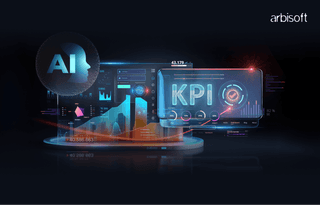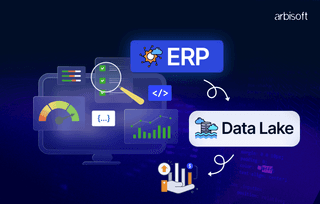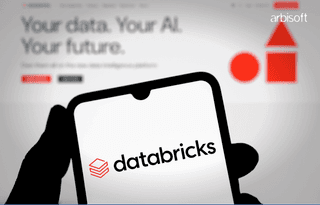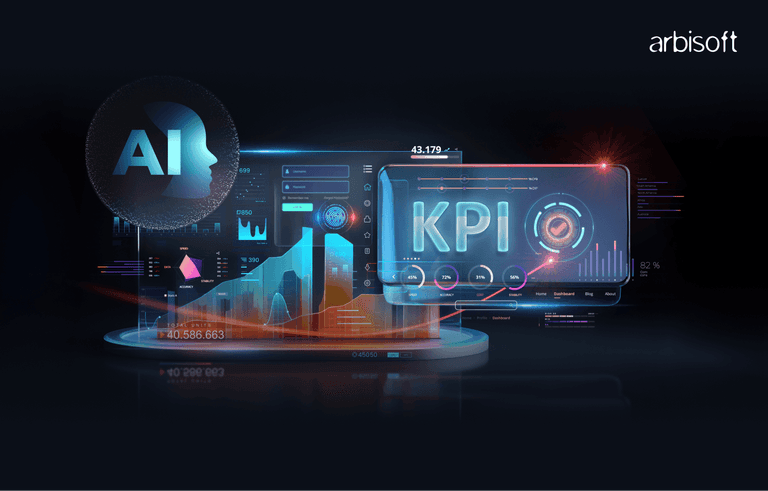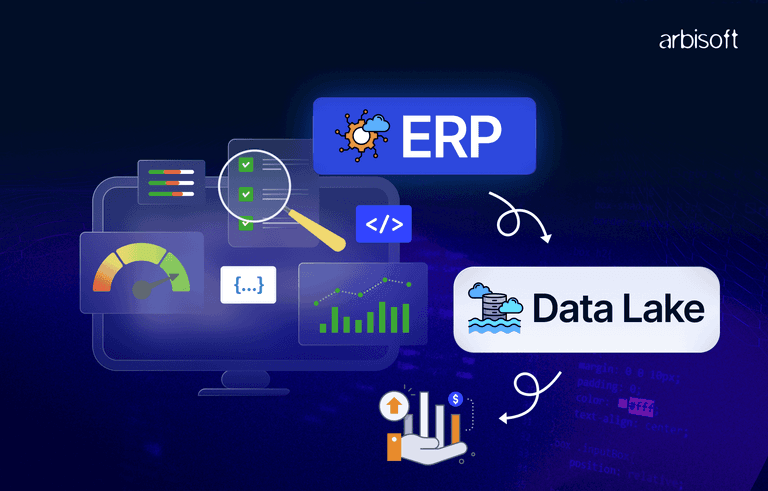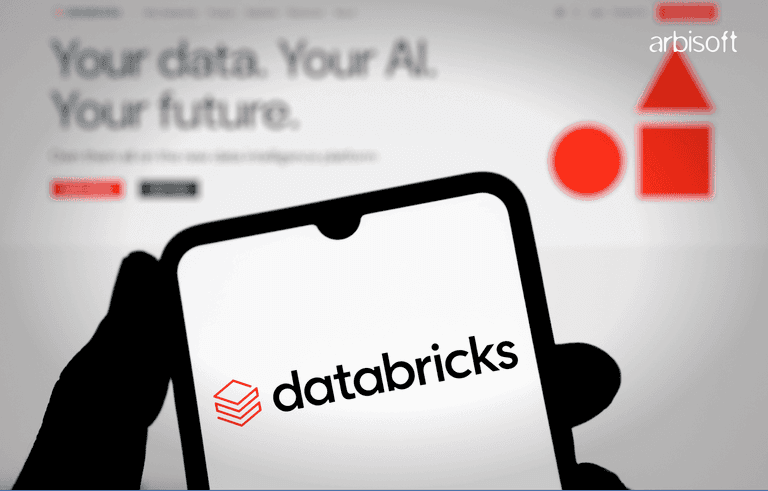We put excellence, value and quality above all - and it shows




A Technology Partnership That Goes Beyond Code

“Arbisoft has been my most trusted technology partner for now over 15 years. Arbisoft has very unique methods of recruiting and training, and the results demonstrate that. They have great teams, great positive attitudes and great communication.”
How to Set Clear Goals and Scalable Data Requirements Before You Hire an AI/ML Team

Thinking about bringing AI into your business? Hold that thought. Before you rush to hire developers or sign off on tools, let’s talk about the real groundwork. Setting clear goals and understanding your data needs is what separates successful AI projects from expensive detours.
The Pressure of Scaling AI: Why It Starts With Preparation
The AI job market today is intense. Companies everywhere are trying to bring in top developers. But the best people don’t come cheap, and they won’t stick around if you’re unclear about what you want to achieve.
I’ve seen companies offer huge bonuses and still get turned down. Talent is scarce, and competition is tough. If you walk in without a plan, you’ll waste time, money, and energy.
Let’s shift gears and look at how to define goals that lead to results.
Defining Success: What Good AI Goals Look Like
You can’t measure progress without a clear goal. This is where a lot of teams get stuck.
Aligning Projects with Business Results
AI efforts should help your business do something better. Increase revenue. Reduce errors. Respond faster to customers. These goals are practical and easy to explain. If your team and leadership can’t describe the purpose of a project in one sentence, take a step back and rethink.
Balancing Short-Term Results With Long-Term Plans
Some AI improvements happen quickly. Others take time. Smart teams know how to aim for both.
You might automate a report in a week, while a demand forecasting model takes months. Make room for quick progress, but keep working on the long-term goals too.
Common Mistakes in Goal Setting
Don’t fall into the trap of setting vague goals. “Make better recommendations” doesn’t mean much without context. Better than what? According to whom?
Also, avoid getting lost in technical numbers that don’t matter to business leaders. Focus on outcomes that are easy to see and feel—time saved, errors reduced, revenue gained.
Once your goals are set, it’s time to talk data.
Mapping Data Requirements for AI Projects
AI runs on data. If your data is disorganized, incomplete, or hard to use, the smartest algorithm won’t help much.
Finding the Right Data
Start with the problem you’re solving. Work backward. What kind of data do you need to make progress?
Do a full check of what you already have. Where does it live? Is it up to date? Are there gaps? Know this before you begin.
Building a Scalable Data Strategy
Growth adds complexity. Your data systems need to keep up.
The strongest setups today rely on cloud-based tools. They’re flexible, secure, and easy to scale. Make sure your system can handle new sources and formats without breaking.
Some companies also use synthetic data to support privacy and fill gaps. It’s becoming more common as teams build larger models safely.
Why Data Quality Matters
A great team can’t fix broken data. If two teams define the same customer in different ways, the results won’t be useful.
Set clear standards for accuracy, completeness, and consistency. Share them across departments. This prevents confusion and saves time.
Now let’s talk about the plan to bring your project to life.
Building Your Implementation Roadmap
Big ideas need structure. A clear path makes it easier to build, test, and expand.
Designing a Step-by-Step Strategy
Break large goals into smaller projects. Test things early. Use each success to guide the next phase.
Make sure every step ties back to your business goals. That way, you know the project is moving in the right direction.
Data Preparation Always Takes Time
Most AI teams spend more time getting data ready than building models. That’s normal.
Clean it. Organize it. Label it. Check for errors. A few weeks of preparation now can save you from major issues later.
Don’t Skip Data Engineering
AI and data engineering go hand in hand. If your team doesn’t include engineers early, you’ll hit problems.
Data engineers build the systems that support your models. They help you scale, automate, and deliver results faster.
With a solid plan and foundation, it’s time to talk about people.
Planning Resources: Skills and Support
Hiring is not about adding more people. It’s about finding the right skills.
What to Look for in Data Engineers
You’ll want people who can manage large datasets, automate pipelines, and work across platforms. Skills in tools like Python, Snowflake, and cloud systems are valuable.
Practical experience matters more than a resume. Choose people who’ve delivered working solutions.
When to Hire and When to Outsource
Not every team needs to hire full-time experts. Some companies bring in contractors or partner with agencies for short-term projects.
Outsourcing can save time and money. Just make sure the external team understands your business and stays connected to your strategy.
Working With a Development Partner
If you hire an AI development company, be clear about what you expect.
They should offer defined timelines, realistic budgets, and detailed project plans. Ask to see examples of similar work. Make sure they explain how each feature will help your business.
Let’s pull everything together before you hire your first developer.
Wrapping Up: What to Do Before You Hire an AI/ML Team
By now, you’ve built a foundation. Let’s summarize the key actions.
Your Checklist
- Define goals that match business needs
- Review all available data sources
- Set data quality standards
- Choose early wins and long-term goals
- Draft a detailed project roadmap
- List skills your team will need
- Decide what to hire and what to outsource
- Make a plan to get stakeholder support
Communicating With Stakeholders
Use clear language. Talk about how your AI project will help people do their jobs better. Show how it will reduce effort or save money.
Stories work better than stats. Paint a picture they can understand.
Conclusion: The Real Work Begins With Planning
AI can help your business grow—but only if you prepare.
Get your goals straight. Build a strong data foundation. Bring in the right people, whether in-house or outside. It all starts with asking the right questions before you write a single line of code.
Good planning today sets you up for success tomorrow. You’re ready to get started.
People Also Asked
1. Why is planning important before hiring an AI/ML team?
Without clear goals and a solid data foundation, you risk wasted time, budget overruns, and poor results. Planning ensures the team works on high-impact, achievable objectives.
2. What should I do before starting an AI project?
Define measurable business goals, review your available data, set quality standards, outline a roadmap, and decide which skills you need in-house versus outsourced.
3. How do I know if my data is ready for AI?
Check that it’s accurate, complete, consistent, and accessible. Identify gaps, outdated sources, or conflicting definitions before building models.
4. Should I hire full-time AI engineers or outsource?
Hire full-time if AI is core to your business. Outsource if you need speed, flexibility, or specialized skills for short-term or experimental projects.
5. What skills should I look for in a data engineer for AI projects?
Strong Python skills, experience with cloud platforms (AWS, Azure, GCP), data pipeline automation (Airflow, Prefect), and knowledge of both batch and streaming data.
6. How do I align AI goals with business objectives?
Tie every deliverable to a clear outcome—such as reducing costs, increasing revenue, or improving customer experience—and communicate these links to stakeholders.
7. How long should I spend on AI project planning?
It varies, but expect to spend several weeks assessing data, defining requirements, and building a roadmap before coding begins.
8. What’s the role of data engineering in AI projects?
Data engineers design and maintain the systems that feed clean, reliable data into AI models, ensuring scalability, automation, and efficiency.
9. How can I secure stakeholder buy-in for an AI initiative?
Use plain language, focus on business value, and share relatable examples of how the project will make workflows easier or deliver measurable gains.
10. What are the biggest mistakes companies make before hiring an AI/ML team?
Vague goals, ignoring data quality, skipping resource planning, and choosing partners without relevant experience are the most common pitfalls.








